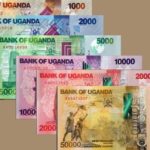The shilling has registered gains against the greenback this week, supported by dollar flows and commodity exporters outperforming existing corporate demand. Additionally, the tightness of liquidity in the money markets has also boosted the local unit.
As of Friday morning, the home currency was seen trading at the 3680/3690 levels, stronger than the week’s opening of 3705 / 3715. We expect the shilling to continue trading stronger within the 3650-3730 levels in the near term.
Liquidity in the money markets continues to be tight with overnight funds averaging 11.63%, while one-week averaged 11.93%. However, we expect the market position to improve as the government releases for this quarter start to trickle-in in the coming days.
In the region, the Kenya shilling continues to be under pressure with a backlog of demand – mainly from the energy sector – still existing. The shilling is expected to trade within the 123.50 – 129.00 range in the near term.
The dollar index hovered near its lowest levels in seven months as data showed that US inflation eased further to 6.5% in December, fueling bets that the Federal Reserve will slow the pace of interest rate hikes going forward. As of Friday morning, the index was trading around 102.50.
The drop in the annual inflation came in hitting a sixth straight month of slowing prices, and the lowest since October 2021. Markets are now betting that the Central Bank would downshift to a smaller 25 basis point rate hike in its next meeting slated for 1st February 2023.
The WTI crude traded near $78 per barrel on Friday, underpinned by an improving demand outlook in China and hopes for less aggressive interest rate hikes from the Fed. China beefed up crude purchases this week after it issued a new import quota following the lifting of its zero-Covid policy.
Gold traded near $1,900 an ounce on Friday and was on track to register its fourth straight weekly gain.






